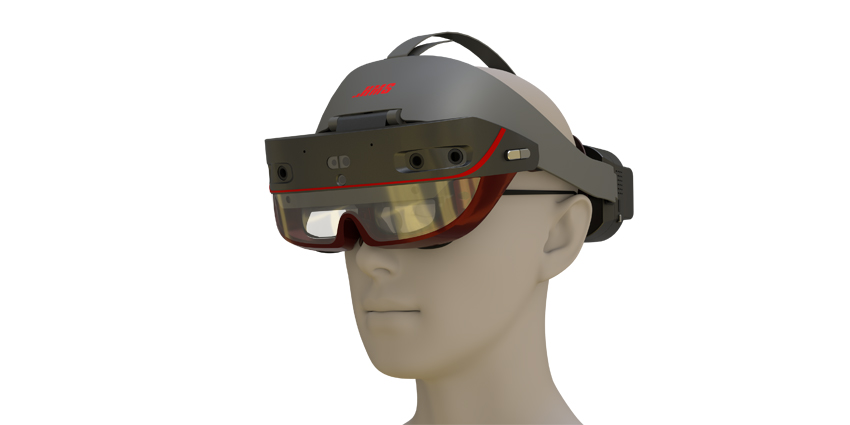Apple introduced its first spatial computing device this Monday at WWDC 2023. Many suspected an XR device would arrive on that fateful day following years of rumours, leaks, and hints from Apple’s CEO Tim Cook.
In 2022, Cook said:
I am incredibly excited about AR as you may know, and the critical thing in any technology, including AR, is putting humanity at the center of it. That is what we focus on every day
And Apple delivered. The Vision Pro is Apple’s first foray into immersive products. For years, Apple has been supporting AR applications and features for a long time, making the transition tested and natural for the firm. Via iPhone applications such as Pokemon: Go, Snapchat, and Instagram, Apple device adopters can already access AR-lite features like branded filters.
However, with Vision Pro, Apple audiences can now experience a fully immersive spatial operating system (OS) that leverages an MR framework to support overlayed immersive graphics, applications, and user interaction methods within an RT3D space surrounding a user.
Spatial computing allows users to interact with applications in 3D space, meaning that, when wearing the Vision Pro, they can interact with applications overlayed on their surroundings, creating an “infinite canvas”, according to Apple.
The device leverages eye tracking, hand tracking, and voice detection to enable a controller-less environment that simplifies immersive exploration by allowing users to interact with their surroundings naturally using their bodies.
Apple is also focusing its Vision Pro device towards enterprise use cases, with the firm making considerations during its showcase event to showcase how the end-users can leverage the device for use cases, such as training, collaboration, and remote assistance.
Apple will debut the Vision Pro in early 2024, costing $3499 in the US.
The Hardware Stack Powering the Vision Pro
So, what hardware is powering the Visions Pro device, and how does it stack up to the many competitors in the AR/MR device market?
The Vision Pro device leverages a custom M2 Silicon chip, similar to the latest Macbook Pro, and Apple’s purpose-built R1 graphics processor for supporting MR applications. The processors are of note because, unlike competitors, Apple is not leveraging Qualcomm technology.
Moreover, the device contains features such as a high-resolution, 23 million pixel display across two huge micro-OLED lenses, enabling a total display resolution of 4096 x 5464 pixels—additionally, Vision Pro leverages high-dynamic range (HDR) and wide colour gamut (WCG) outputs.
The headset also has several sensors for tracking head, eye, and hand movements. This allows users to fully interact with their spatial computing environment and interact with Apple-brand productivity applications in a 360 workspace.
The Vision Pro device also features a 2-hour battery life, an immersive camera for capturing spatial audio/photos/video for peer-to-peer sharing, iPhone/iPad/Mac synchronization, a light seal, a LiDAR scanner, and a TrueDepth camera.
In parallel with its hardware specs, the Vision Pro also runs on a custom operating system called VisionOS for MR applications.
Compared to competitors
The specifications for Apple’s headset are promising. Although the XR device market is competitive, many hardware providers such as Meta, Pico, and HTC distribute powerful MR/AR products, which could lead users into a fierce debate over which device is worth the investment.
For example, the upcoming Meta Quest 3 promises a 2064×2208 display resolution per eye, 120Hz refresh rate, Snapdragon XR2 Gen 2 chip, 12GB of RAM, 128GB/256GB/512GB of storage space, eye-tracking, head-tracking, hand-tracking, passthrough cameras, Spatial audio, and up to 3 hours battery life.
The Meta Quest 3 is a significant upgrade over the Quest 2 and Pro, featuring significantly improved features at a $499 price point – much lower than the Pro’s asking price.
On the other hand, the Pico 4 contains completive specs, including a single 1.5K display with a resolution of 2560×1440 pixels, 90Hz refresh rate, Qualcomm Snapdragon XR2 chip, 8GB of RAM, 128GB/256GB of storage, eye-tracking, hand-tracking, passthrough cameras, spatial audio, and 2 hours of battery.
Moreover, the Pico 4 starts at $430, providing a competitive price point for enterprise adopters.
The HTC Vive XR Elite also provides a competitive and lightweight option. The device contains a 1440×1600 pixel display, 90Hz refresh, Qualcomm Snapdragon 845 chip, 4GB of RAM, 64GB of storage, eye/hand tracking, passthrough technology, spatial audio, and no built-in battery.
The HTC Vive XR Elite will also cost users roughly $599.
Bringing Fresh Competition to the XR Space Race
The XR device space is already rich with the competition; however, Apple’s Vision Pro will bring more life to the race.
Although to ensure success, Apple’s device must stand firm to break through the gates of XR.
However, with good features, the Apple fandom, an enterprise angle, and a solid application/developer support history, the Vision Pro may easily place itself at the top of the pile after the first – and most expensive – device roll-out ends.







